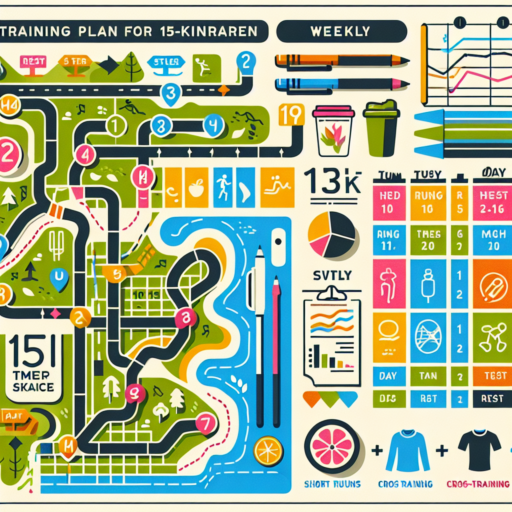Can you train running and cycling at the same time?
Integrating both running and cycling into your training regimen can offer a comprehensive way to enhance your fitness, manage your weight, and improve your endurance. This blend, often a cornerstone of triathlon training, leverages the unique benefits of each sport to create a balanced and varied fitness experience. While running emphasizes cardiovascular strength and bone density, cycling offers a low-impact alternative that reduces stress on the joints and helps in muscle recovery.
Benefits of Combining Running and Cycling
- Enhanced Cardiovascular Health: Alternating between running and cycling can increase heart health and lung capacity, offering a robust defense against heart disease.
- Improved Joint Health: Cycling provides a respite for your joints from the high-impact nature of running, thus reducing the risk of overuse injuries.
- Better Physical Balance: Combining these activities addresses different muscle groups, promoting a more balanced physical development.
Adopting a training schedule that accommodates both running and cycling can be a highly effective way to enhance overall fitness without increasing the risk of burnout or injury. Careful planning ensures that you’re not overworking certain muscle groups and allows adequate recovery periods, critical in preventing overuse injuries. Moreover, the variety provided by this combination can keep training schedules interesting, boosting your motivation and engagement over time.
No se han encontrado productos.
How to schedule running and cycling?
Integrating both running and cycling into your fitness routine can be a game-changer for improving endurance and strength. However, crafting a balanced schedule that supports recovery while maximizing benefits can be challenging. Here’s a guide on how to effectively schedule running and cycling workouts throughout your week.
Understanding Your Fitness Goals
Before diving into a combined schedule, it’s crucial to clarify your primary fitness objectives. Are you training for a triathlon, looking to improve general fitness, or focusing on weight loss? Your primary goal will significantly influence how you balance running and cycling sessions. For triathlon training, you might alternate days between running and cycling with increased volume and intensity. In contrast, for weight loss or general fitness, you might focus on shorter, more frequent sessions of each, ensuring they complement rather than compete with each other.
Creating a Weekly Schedule
A well-structured weekly schedule should incorporate variety, balance, and rest. Begin with alternating days of running and cycling, catering to different intensity levels. For instance, pair a high-intensity interval running session with a moderate, longer-distance cycle ride the following day. This approach helps in managing fatigue and preventing overtraining. Moreover, incorporating at least one full rest day or an active recovery day with very light, low-impact activity is essential for recovery and performance improvement.
- Monday: Rest or gentle yoga/stretching
- Tuesday: Interval running session (High intensity)
- Wednesday: Steady, moderate-distance cycle ride
- Thursday: Rest or active recovery
- Friday: Long-distance run at a comfortable pace
- Saturday: Hill repeats or speed work on the bike
- Sunday: Cross-training or a leisurely bike ride
Is it okay to cycle and run on the same day?
Understanding the Impact on Your Body
Combining cycling and running in a single day can offer a comprehensive workout engaging different muscle groups. Running primarily works your glutes, hamstrings, and quads, while cycling benefits your lower back, calves, and quads without the high-impact stress on your joints that running incurs. However, balancing these activities is crucial to prevent overuse injuries and ensure adequate muscle recovery. Understanding your body’s limits and gradually increasing the intensity and duration of each activity is key to achieving the best results without compromising your health.
Benefits of Combining Cycling and Running
Engaging in both cycling and running on the same day can enhance your cardiovascular health, improve endurance, and promote muscle tone. This combination, often referred to as brick training in the triathlon community, can help athletes prepare for multisport events by simulating race conditions and improving transition times between disciplines. Moreover, mixing these two exercises can prevent workout monotony, keeping your fitness routine dynamic and engaging.
Best Practices for a Dual Workout Day
For those eager to embrace both activities in one day, it’s advisable to start with a moderate intensity to assess how your body reacts. Alternating between cycling and running can also minimize the risk of injury by reducing repetitive strain on the same muscle groups. Hydration and proper nutrition play a crucial role in recovery and performance when tackling two physically demanding activities. Incorporating rest days into your training schedule to allow your body to recover fully is equally important. Listening to your body’s signals and adjusting your training accordingly can help maintain a healthy balance between cycling and running.
Can you alternate running and cycling everyday?
Alternating between running and cycling each day is a question that draws attention from many fitness enthusiasts and athletes. Embracing both activities in your routine could seem like an ambitious approach to staying in shape, yet it’s crucial to understand the dynamics and impact of this combination on your body.
The Benefits of Mixing Running and Cycling
By alternating running and cycling, you are engaging different muscle groups which can lead to improved overall fitness and reduced risk of injury. Running focuses on the hamstrings, glutes, and quads, while cycling emphasizes the strength and endurance of the quadriceps and calves. This mix promotes muscle balance and reduces the wear and tear associated with repetitive use of the same muscles. Additionally, incorporating both activities can prevent boredom and maintain high levels of motivation by offering variety in your fitness regimen.
Considerations for Alternating Running and Cycling
While the idea of mixing running and cycling daily is appealing, it is essential to pay attention to your body’s signals. Overtraining, especially without adequate rest and recovery, can lead to fatigue, injuries, and decreased performance. Beginners or those new to either activity should gradually increase their intensity and duration to avoid overwhelming their bodies. It’s also vital to consider factors such as nutrition, hydration, and sleep, as these play a significant role in recovery and performance.
In summary, alternating running and cycling each day can be an effective way to enhance your fitness, provided that careful consideration is given to recovery, training intensity, and overall well-being. Listen to your body and adjust your routine as needed to ensure a balance between challenging your physical limits and allowing adequate recovery.




